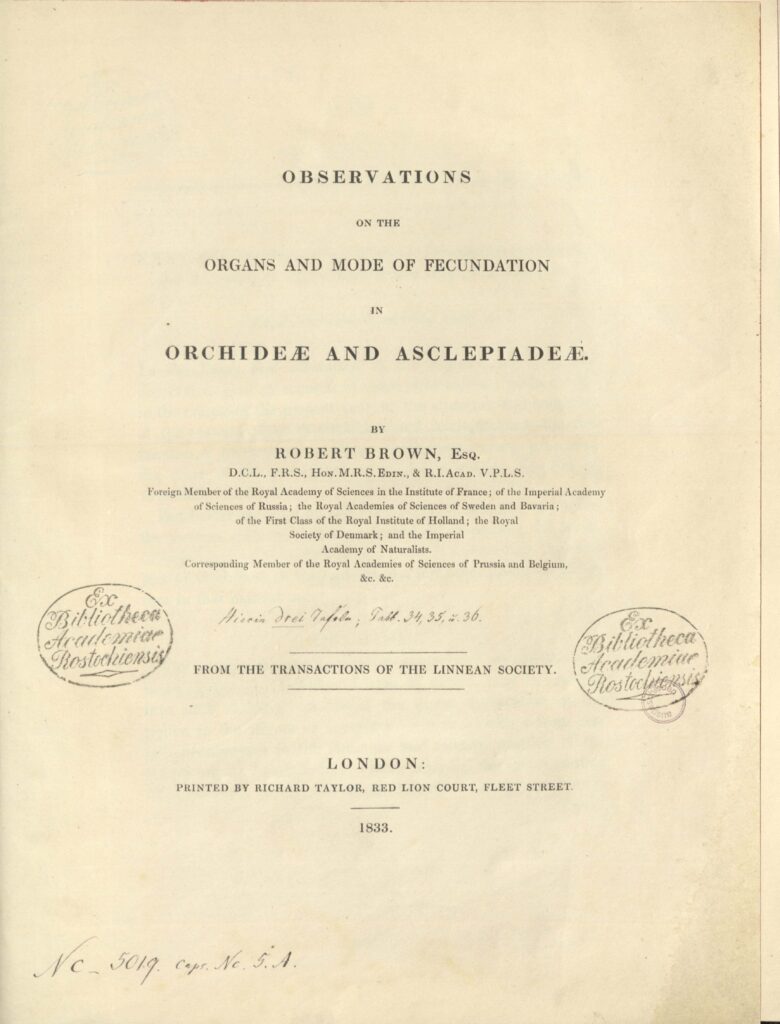Robert Brown, On the organs and manner of fecundation in orchideae and asclepiadeae. London, 1833.

”a single circular areola, generally somewhat more opake than the membrane of the cell . . . only one areola belongs to each cell. . . . This areola, or nucleus of the cell as perhaps it might be termed, is not confined to the epidermis, being also found not only in the pubescence of the surface particularly when jointed, as in Cypripedium, but in many cases in the parenchyma or internal cells of the tissue. . . . The nucleus of the cell is not confined to the Orchideae but is equally manifest in many other Monocotyledonous families; and I have even found it, hitherto however in very few cases, in the epidermis of Dicotyledonous plants” (pp. 710-12).
”A few earlier botanists evidently had observed the presence of this nucleus in some cells, as Brown himself points out, but he was the first specially to demonstrate its general occurrence in living cells and to give it the name ’nucleus'” (Dictionary of Scientific Biography). Garrison-Morton 109.
First journal edition, with the original front cover.
Stort tack till Sven Hagströmer, ordförande i Hagströmerbibliotekets vänförening, med vars hjälp bibliotekets samlingar kan berikas på detta sätt!


